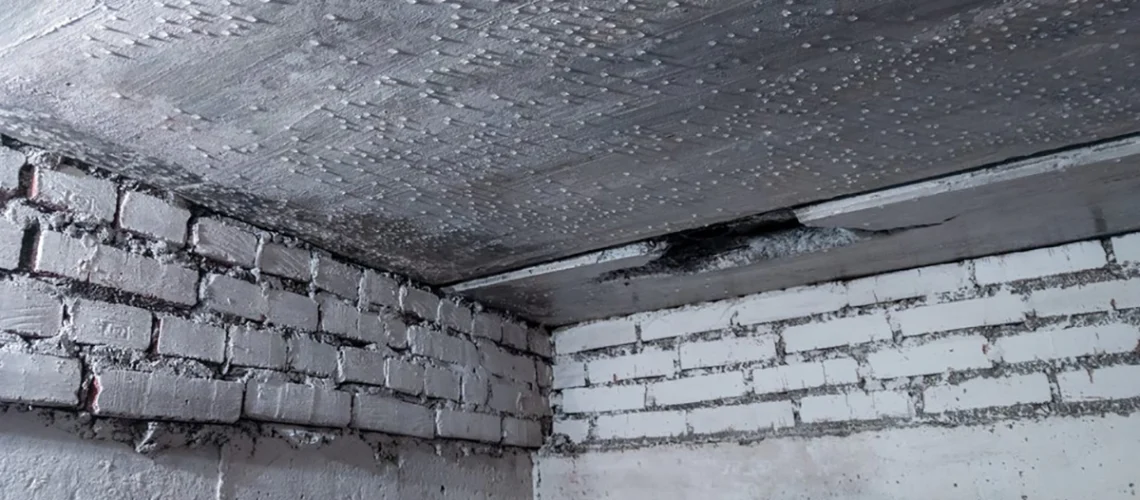Basement humidity problems affect thousands of homeowners every year, yet many still underestimate just how serious the consequences can be. A damp basement isn’t just an inconvenience — it can lead to structural damage, mold infestations, and health risks that compromise your entire home. In this article, we will explore the hidden dangers of basement humidity and explain how damp proofing helps protect your property and well-being.
Contents
Why Basement Humidity Is More Dangerous Than You Think
Many people think of basement moisture as a minor nuisance. However, basement humidity is far more dangerous than it appears. Here’s why:
1. Structural Damage
When moisture penetrates basement walls and floors, it can weaken critical building materials over time. Concrete can crack and crumble, wood can rot, and drywall can become soft and crumbly. These effects undermine the foundation’s strength, causing expensive repairs and even putting your home at risk.
2. Mold and Mildew Growth
Basements are naturally cooler and darker than the rest of the house, creating an ideal environment for mold and mildew. Mold spores thrive in damp conditions and can spread quickly across walls, ceilings, and stored items. Mold not only damages surfaces but also releases spores that can trigger allergies, asthma, and other respiratory problems.
3. Poor Indoor Air Quality
Excess humidity in the basement often causes musty odors and poor air quality throughout your home. This can make living conditions uncomfortable and unhealthy, especially for children, the elderly, or those with respiratory conditions.
4. Damage to Personal Property
Basements are often used for storage. Unfortunately, basement humidity can ruin furniture, electronics, clothing, and important documents. Moisture damage is often irreversible and can lead to costly replacements.
5. Increased Energy Costs
High humidity levels make your HVAC system work harder to maintain comfortable temperatures, driving up your energy bills. Moist air also reduces the effectiveness of insulation, further impacting heating and cooling efficiency.
CTA:Don’t let basement humidity ruin your home! Contact our Toronto damp proofing experts today for a free inspection and tailored solutions that will keep your basement dry and mold-free.
How Damp Proofing Can Fix the Problem
Stopping basement moisture before it causes damage is vital. This is where damp proofing comes into play.
Damp proofing basement walls and floors involves applying barriers that block moisture from entering your home. This can be done through various interior and exterior methods, depending on the severity of the humidity problems.
Interior Damp Proofing: A Practical Solution
Interior damp proofing is one of the most common and cost-effective ways to combat basement humidity problems. It typically involves:
- Waterproof Coatings and Sealants: These specialized paints and sealants create a water-resistant layer on your basement walls and floors. They prevent moisture from seeping through cracks or porous concrete.
- Crack Repairs and Joint Sealing: Identifying and sealing gaps or cracks where water enters is essential for interior damp proofing to work effectively.
- Interior Drainage Systems: In some cases, interior French drains or sump pumps are installed to channel any water that does enter away from the basement, keeping it dry.
This method is less disruptive and quicker to install than exterior waterproofing and is ideal for homeowners dealing with moderate moisture issues.
Exterior Damp Proofing: The Ultimate Protection
For severe basement humidity problems or ongoing water intrusion, exterior damp proofing is the most comprehensive solution. This involves:
- Excavation Around the Foundation: The soil next to your home is dug out to expose foundation walls.
- Application of Waterproof Membranes: Heavy-duty membranes or coatings are applied to the exterior walls, preventing groundwater from penetrating.
- Improved Drainage Installation: Exterior drainage solutions like French drains and proper grading redirect water away from the foundation.
While exterior damp proofing is more expensive and invasive, it provides long-term protection against basement flooding and humidity.
How to Stop Basement Moisture: Additional Tips
Besides professional damp proofing, here are some effective ways to reduce basement humidity:
- Improve Ventilation: Ensure your basement has proper airflow using vents, fans, or dehumidifiers.
- Control Indoor Humidity: Use dehumidifiers to keep basement humidity levels ideally between 30% and 50%.
- Redirect Surface Water: Make sure gutters and downspouts channel rainwater well away from your foundation.
- Seal Windows and Doors: Properly caulk and seal any basement windows or doors to prevent water ingress.
Mold Prevention in Basement: Why It Matters
Mold prevention in basement spaces is crucial because mold spores can cause serious health problems. The key to preventing mold is controlling moisture levels — which is why damp proofing is an essential step.
Signs of mold include musty odors, visible black or green patches on walls, and allergic reactions among household members. If you notice any of these, it’s important to act immediately by addressing moisture issues and, if necessary, hiring professionals to safely remove mold.
Conclusion
Basement humidity problems are more than just a minor inconvenience; they pose serious threats to your home’s structure, your possessions, and your family’s health. Understanding these hidden dangers and investing in effective damp proofing solutions can save you thousands in repairs and provide peace of mind.
Whether you choose interior damp proofing for moderate issues or exterior waterproofing for more severe cases, addressing basement moisture promptly is the smartest way to protect your investment.



